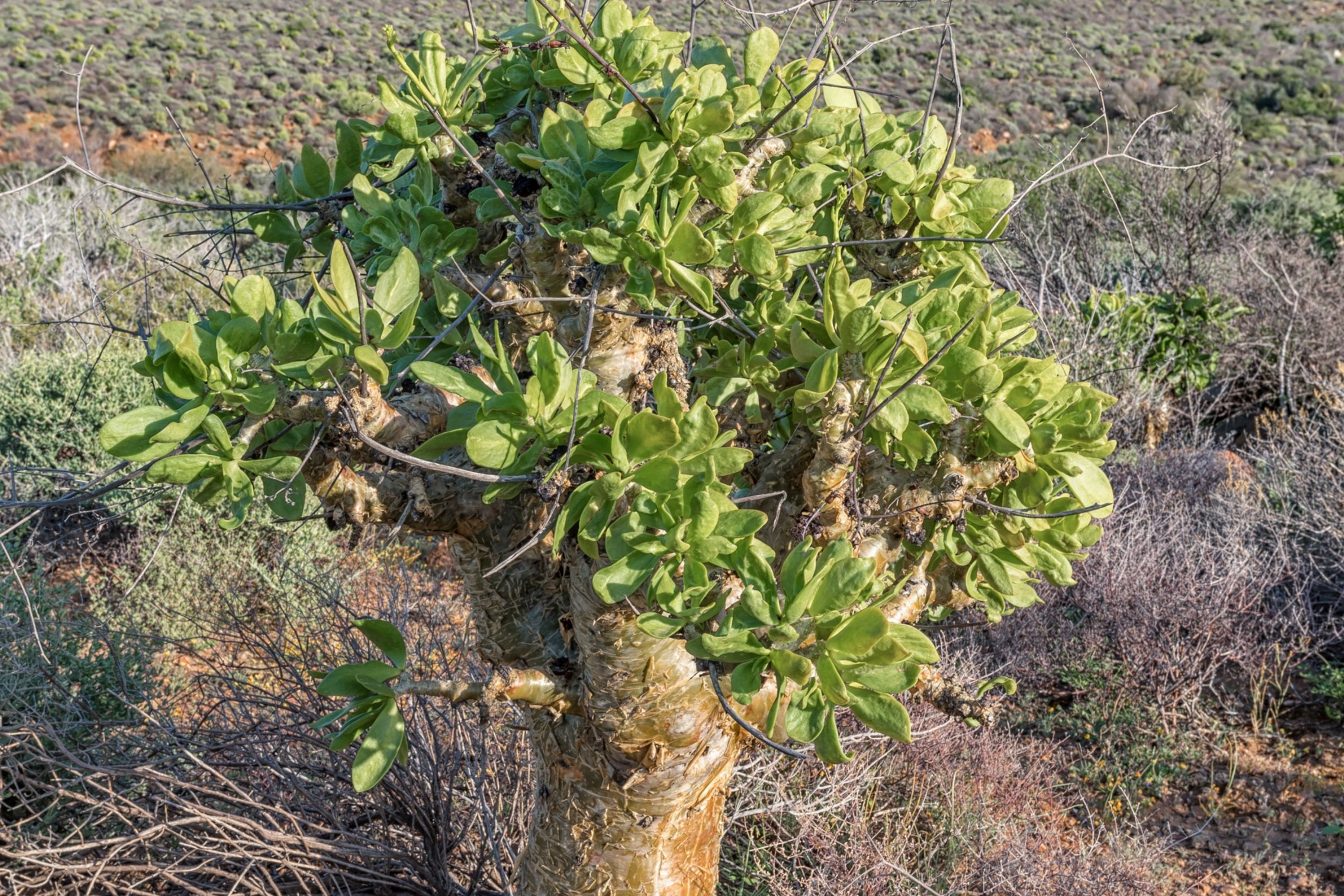"Butter tree "
(Tylecodon paniculatus)

Description
Tylecodon paniculatus, also known as butter bush, butter tree, butterboom or rooisuikerblom (Afrikaans), is a species of succulent plant in the genus Tylecodon belonging to the family Crassulaceae. Tylecodon paniculatus is a thickset, robust succulent dwarf tree up to 2.5–3 m tall, with very fat stems with usually well branched rounded crown. The single main trunk and branches are covered with mustard-yellow to olive-green bark peeling in papery semi-translucent sheets. Branches are short, with prominent leaf scars. Leaves are clustered and spirally arranged around the apex of the growing tips simple during the wintertime; they are paddle-shaped, 5–12 cm long and 2–10 cm wide, thickly succulent, bright yellowish-green; apex is broadly tapering to rounded, base is tapering without petiole. The plant is deciduous. Inflorescences are spectacular slender, ascending thyrses to 40 cm, with bright crimson-red stalks. Flowers have five joined sepals and five joined petals, forming an orange-yellow to red urn-shaped tube 1.5–2.5 cm long with spreading lobes. Ten stamens are pendulous at first, then upright as the petal-tube dries. The species grows in the arid, winter rain-fall regions from Namibia to the southwestern South Africa. The plant contains bufadienolide-type cardiac glycoside cotyledoside which causes cotyledonosis or nenta poisoning ("krimpsiekte") in sheep and goats. Tylecodon is a genus of succulent plants in the family Crassulaceae, native to southern Africa. Until the late 1970s all these plants were included in the genus Cotyledon, but in 1978 Helmut Toelken of the Botanical Research Institute, Pretoria, split them off into a genus of their own. The grounds for splitting Cotyledon to create the new genus included certain features of the flowers, but more conspicuously, the leaves of Tylecodon are deciduous in summer and they are borne in a spiral arrangement, rather than the opposite, decussate arrangement of Cotyledon leaves. The species are very varied, ranging from dwarf succulents such as Tylecodon reticulatus to Tylecodon paniculatus, which may exceed two metres in height. The new name Tylecodon was apparently chosen as a syllabic anagram of the earlier name Cotyledon.
Taxonomic tree:







